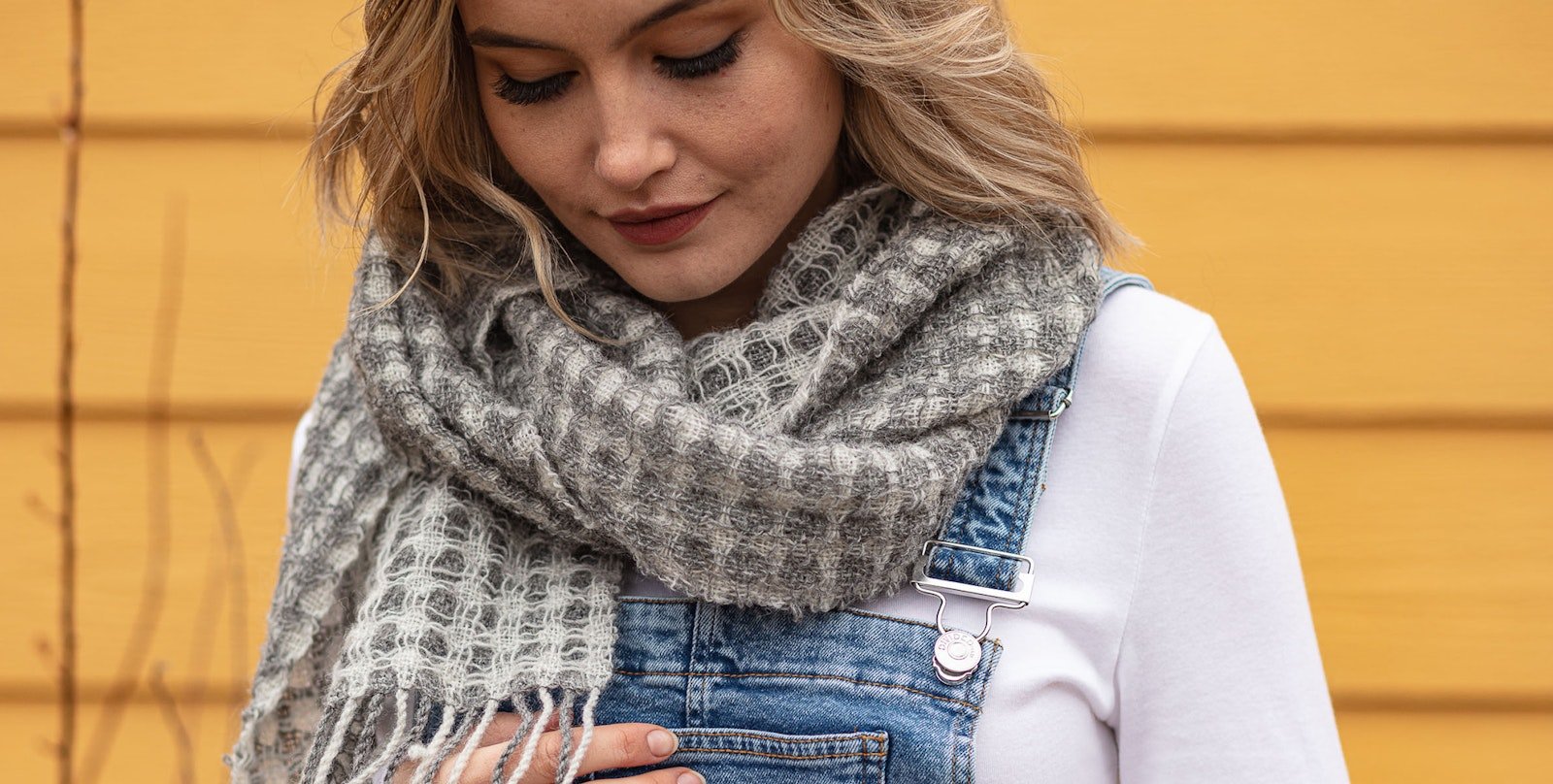When I was a weaving teacher, one of the concepts I wanted my students to understand was how thread that wasn’t under tension would find a way to get out of control. It’s true. Just pop off the brake on your loom and watch the warp ends wriggle around. You can’t work effectively with wriggly threads.
In contrast, deflected weaves take that concept and put it to work to a designer’s advantage. Off tension and wet-finished, a sedate Ms and Os pattern will bloom into circular cells, and angular-looking deflected doubleweave will become curvy; that’s the warp and weft wriggling around.
Deflection can also arise by yarn choice and fiber combinations. Pair a yarn that loves to full with one that is stable, and you will get deflection. Using yarns that are highly spun (active) in combination with those that aren’t can also cause deflection. Those active yarns will push and pull the inactive yarns in expected—and unexpected—ways.
In most cases, the drawdown for deflected weaves serves simply as a guide, and it is only through experimentation that you truly understand what the threads will do off the loom and what the fabric will look and feel like. For this reason, we are devoting Handwoven November/December 2021 to deflection. We want to see the results of our readers’ experimentation with deflecting threads and pushing the genre a bit.
Here is the official issue theme:
Reflecting on Deflecting Deflection arises from multiple factors, including weave structure and yarn choice. This issue will feature techniques that cause deflection and the beautiful projects that result.
Here is the wintry palette we chose to showcase the deflected projects.
Please note that we have changed our submission process and are also using a new submission form. We base our project selections for each issue on contributor photographs. We will review the proposals and ask for additional photographs if needed, to be sent in before the end of March. After the project-selection meeting, we will contact everyone whose project is accepted and ask that it be submitted along with the project paperwork.
Proposals for projects and articles due: 02/01/2021
Photographs of projects due: 03/29/2021
Article text and photographs due: 03/29/2021
Physical projects with paperwork due: 05/10/2021
If you would like to get a head start on the paperwork, here is what you need:
Please use our Handwoven submission form for proposals. Submission guidelines can be found here.
Please use the address below for inquiries that won’t fit into our submission form. Please contact us and ask for a physical address to send any pieces of your proposal that cannot be emailed.
Editorial email: [email protected]
We are looking forward to seeing your proposals for projects and articles that show how threads off tension can cause deflection.
Weave well,
Susan

